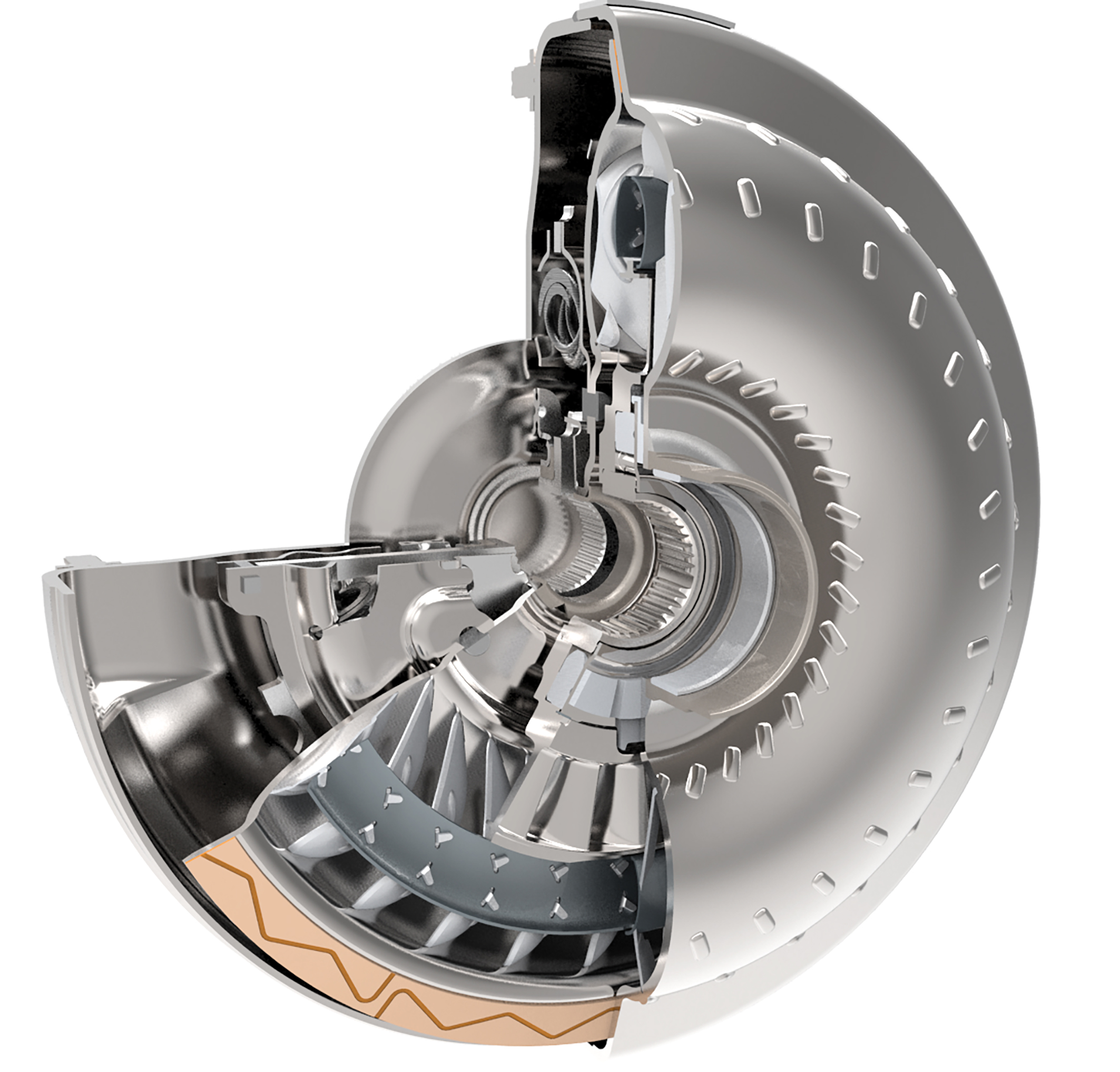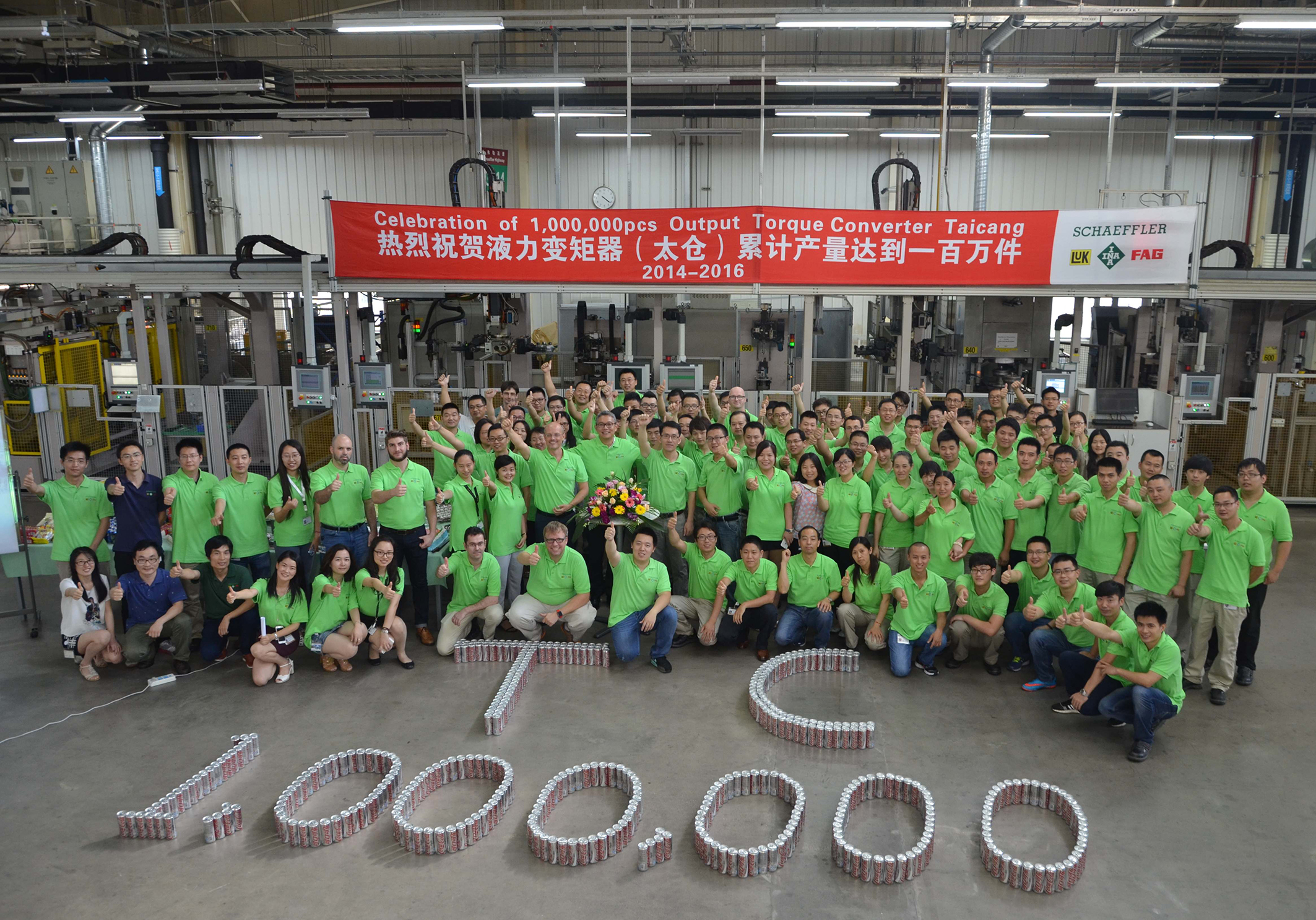The popularity of automatic transmissions is on the rise, a trend boosted by the increasing demand for technologies that reduce fuel consumption and emissions, since user-friendly automatic transmissions are now setting the standard in terms of efficiency thanks to new torque converter systems.
The iTC torque converter from Schaeffler represents an entirely new generation of components that are lighter and reduce vibrations. A key feature of the iTC – or “integrated torque converter”, to give it its full name – is a lock-up clutch that is integrated into the converter’s turbine. This not only makes the system lighter, it also creates space for more efficient torsion dampers, such as the centrifugal pendulum-type absorber developed by Schaeffler. “The damper with a centrifugal pendulum-type absorber in the torque converter significantly improves the isolation of vibrations. This technology thus allows the lock-up clutch to be closed at an earlier stage, which means that fuel economy and comfort can be improved at the same time”, explains Uwe Wagner, Vice President Research and Development Automotive at Schaeffler. “That is why the majority of the torque converters used in automatic transmissions will include a centrifugal pendulum-type absorber in the future”.
Compared to conventional torque converters, the design of the iTC requires fewer components. Because the entire axial force of the turbine is transferred via the friction surface, this design does not require an axial bearing between the turbine and the stator. The number of individual elements required for the application of torque to the torsion damper and the integration of the piston into the turbine has also been reduced. This not only makes the design lighter, it also allows more effective torsion dampers to be designed using the available design envelope.
Torque converter custom-made for modern turbocharged engines
The mTC (multi-functional torque converter) is well suited for use in combination with start-stop systems and can compensate for delayed response behavior, i.e. the so-called “turbo lag”. Furthermore, fuel savings of up to five percent can be achieved with the mTC thanks to the optional idle disconnect function and early torque converter lockup. The mTC eliminates the torque converter idling losses that previously had to be taken into account, as the transmission can be decoupled from the engine, and this converter arrangement also allows the mass moments of inertia to be distributed in a more beneficial way, resulting in an improved isolation of vibrations in all operating ranges. Because of the engine decoupling, the engine reaches higher starting speeds at the moment at which the torque converter is activated.
Globally positioned – tailor-made for the customer
Schaeffler’s LuK brand began developing torque converters in Bühl in 1990. Schaeffler strengthened its market position in the USA with its own torque converter development and manufacturing location in Wooster (Ohio) in 1998. Today, this location plays the role of a competence center in Schaeffler’s global development network.
In April 2014, torque converter production also began at Schaeffler’s plant in Taicang (China), where the one-millionth converter recently came off the production line. No other torque converter project in the world has been developed so quickly in such a short space of time.
Source: Schaeffler




















